FUTURE OF FISHING
Fishing’s many faces
The different fishing techniques
There are a variety of common fishing techniques, each corresponding to specific fishing types and to specific fish, crustacean or shellfish species.
FISH-CATCHING TECHNIQUES
Trawling
All types of fishing vessels are adapted to trawling, from those less than 8 metres long all the way up to those of 38 metres and above. As a result, trawlers can go out to sea for periods that range from one day to several weeks, and then tend to fish in the same areas throughout the year.
Trawl nets are cone-shaped net (made from two, four or more panels) which are towed, by one or two boats, on the bottom or in midwater (pelagic). The cone-shaped body ends in a bag or coded. The horizontal opening of the gear while it is towed is maintained by beams, otter boards or by the distance between the two towing vessels (pair trawling). Floats and weights help the vertical opening. Two parallel trawls might be rigged between two otter boards (twin trawls). The mesh size in the codend or special designed devices are used to regulate the size and species to be captured.The mesh size of the trawl net is regulated to adapt to fishing areas and to determine the species caught. The targeted species are numerous: hake, whiting, haddock, cod, ling, monkfish, megrim, sole, lemon sole, skate, squid, cuttlefish and prawns.
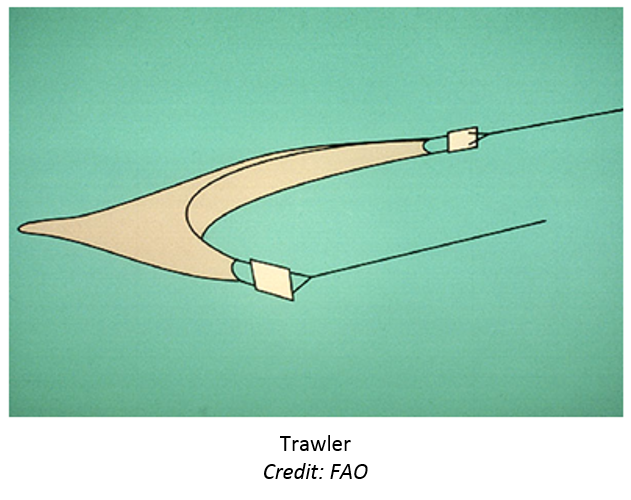
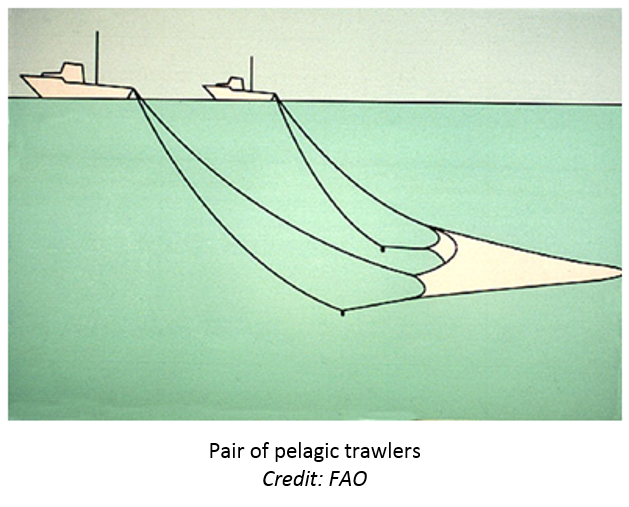
Netting

Netting is a passive fishing technique. Fishermen use long, narrow and flat nets, weighted in the sea the day before, and lifted up the next day. This technique is suited to coastal and open sea areas. Nets are placed in net pens and put directly in the sea. The net is lifted with a net hauler. Species are removed from the net, cleaned, prepared and stored simultaneously.
The net can be adapted according to the targeted species, seasons, and regulations. The targeted species include: red mullet, pollock, bass, sole, hake, monkfish, skate, and ling. Some shellfish can also be caught with this technique, such as spider crab or lobster.
Seine fishing
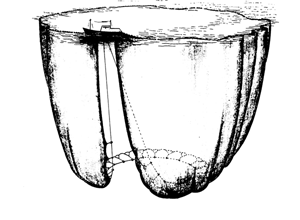
Seine fishing consists of rectangular nets used at the surface to encircle shoals, which are detected through sonar. The fishing vessel navigates around the shoal, to trap the fish in the net. Fish are then caught with a large landing net and moved into large chilled water tanks. If the fish trapped are not the one targeted, fishermen open the seine nets and let the fish go.
Species caught with this technique are: sardines, anchovies at the end of the fishing season, and big horse mackerel in winter.
Lining and long-lining methods
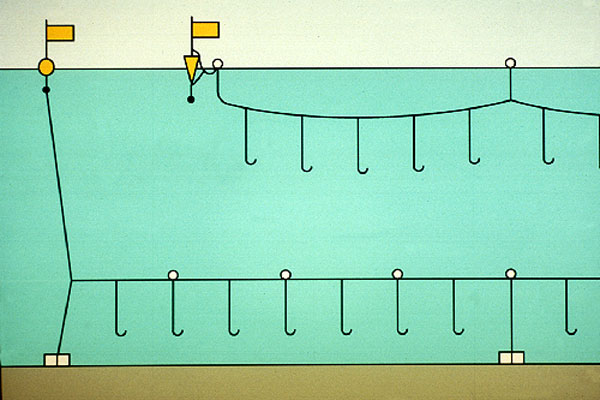
Lining and long-lining both use baited lines. Lining is mostly used by small fishing vessels (less than 12 metres long). Baited hooks are actively towed by a vessel, so as to catch the targeted species. The two main species caught are sea bass and pollock. During the fishing season mackerel, bream and tuna can also be caught.
Long-lining is a passive fishing technique. A long baited main line is either left anchored on the seabed or floating. Species targeted are conger, ling, cod and sea bass.
CRUSTACEAN AND SHELLFISH FISHING TECHNIQUES
Trap fishery
This passive fishing technique is used to catch shellfish and crustaceans. Fishermen lay baited traps the day before, and lift them up the next day. They consist of a metallic framework covered by a net. Once the crustacean is inside the pot or trap, it cannot escape. However, this technique is highly selective, as it is adapted to targeted specific species. By-catches of non-targeted species are very rare.
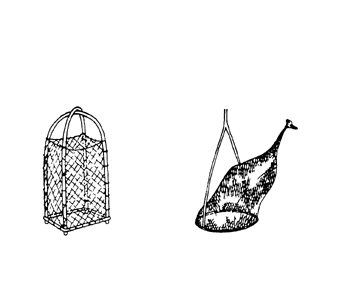

Dredgers fishing
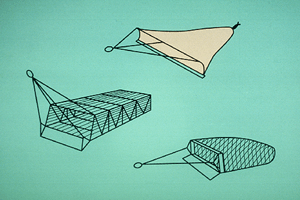
Dredgers are rigid mesh gears trawled on the seabed to dig up shellfish. This fishing method is highly regulated, and can only be carried out in specific areas, the natural marine shell deposits. This technique is used to catch living shellfish on the seabed, especially scallops, bay scallops, sea urchins and clams.
Fishing vessels using this fishing technique are between 7 and 16 meters long, and multipurpose. They can adapt to fishing zones resources and species seasonality. There are two different types of dredgers that adapt to the seabed. The Britanny dredger is used on seabed with little relief, while the English dredger is used for rocky seabed.
Shore fishing
On-foot fishing is a seashore fishing technique, on sand or slit. Fishermen can use their hands or mechanic gears such as rolling dredgers.
Caught species are mostly shellfish and crustacean.